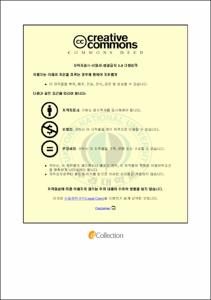Aureobasidium pullulans HP-2001에 의해 생산되는 다양한 분자량의 풀루란 대량 생산 공정에 관한 연구
- Alternative Title
- Development of the process for mass production of various molecular weight pullulan by Aureobasidium pullulans
- Abstract
- 풀루란 대량생산의 특성을 확인하기 위해 7 L, 100 L, 5 ton, 6 ton air-lift 타입의 배양기를 이용하여 최적의 대량생산 공정을 확립하고 생성되는 풀루란의 배양중에 분자량을 조절하는 연구를 진행 하였다.
sucrose를 탄소원으로한 최적화된 배지조성으로 7 L 발효조의 교반속도를 600 rpm으로 배양했을 경우, 72시간에 이르러 최고 60.80 g/L의 pullulan을 얻을 수 있었다. 또한 Scale up을 통한 6 ton air-lift 타입의 발효기에서는 48.80 g/L의 pullulan을 얻었다.
최근에는 저분자화 또는 고분자화하여 생물학적 기능을 이용한 새로운 형태의 다양한 기능성 소재들이 개발되어 제품화 되고 있으며, 각 분자량에 따라 이용도가 달라진다. 따라서 본 연구에서 초기 pH, 배양 중 pH 조절, CaCO3와 Ascorbic acid 첨가에 의한 배양중 분자량 조절, 가수분해 및 기질에 의한 분자량 조절 기술에 관한 연구를 진행 하였다. 풀루란의 분자량의 조절에 있어서 가장 핵심적인 요소는 배양중에 pH 변화를 어떻게 조절하는가와 깊은 관련을 가지고 있다. 이에 배양 초기 pH 조절 연구 결과 pH 5-6에서 생산성이 가장 높게 나왔으며 분자량은 800-1,000 KDa 풀루란이 생산되는 결과를 보여주었다. 여기서 주목할 것은 초기 pH가 낮을수록 고분자의 풀루란이 생산되는 것을 확인할 수 있었고 반면에 생산성은 감소하는 경향을 나타내었다. 따라서 초기 pH를 6.0으로 고정하고. 배양 중 pH를 변화시키는 방법으로 인위적으로 CaCO3를 첨가하여 조절하였다. 그 결과 1,000 KDa 정도의 고분자 풀루란을 생산할 경우 질소원으로 ISP를 2.5g/L 첨가하거나 CaCO3 0.1g/l을, 500kDa의 풀루란을 생산할 경우 CaCO3 0.5g/l을, 300kDa 내외의 풀루란을 생산할 경우 CaCO3 1.0g/l 혹은 Ascorbic acid를 혼용하여 사용하는 것이 가장 효과적이었다. 또한 배양 중에 발생하는 색소 침착 방지를 위해 ascorbic acid를 첨가하였으며 1 g/L 가 가장 효과적임을 확인하였다.
발효 공정 후 분리 정제 과정에서는 균체 및 색소침착이 제거된 순수한 풀루란 생산을 목적으로 한다. 이에 여과보조제로 규조토를 첨가한 배양액을 필터프레스를 이용하여 균체를 제거하고, 활성탄 처리를 통한 탈색, 탈취공정을 진행하였다.
- Issued Date
- 2010
- Awarded Date
- 2010. 2
- Type
- Dissertation
- Keyword
- pullulan
- Publisher
- 부경대학교
- Alternative Author(s)
- Jung, Dae Young
- Affiliation
- 부경대학교 해양생명공학협동과정
- Department
- 대학원 해양생명공학협동과정
- Advisor
- 김성구
- Table Of Contents
- I. INTRODUCTION. 1
1. Production of Pullulan 1
2. Uses and Application of Pullulan 7
2-1. Food Industry 9
2-2. Pharmaceutical Industry 10
2-3. Miscellaneous Industry 13
2-4. Control of molecular weight pullulan 14
II. MATERIAL AND METHODS 16
1. Bacterial Strain and Media 16
2. Analytical Methods 18
2-1. Production of Pullulan 18
2-2. Determination of Sugars 19
2-3. Composition Analysis by GC and FTIR 20
2-4. Measurement of Viscosity 21
2-5. Determination of Molecular Weight by Gel Permeation Chromatography (GPC) 22
2-6. Treatment of Pullulans with Pullulanase 22
2-7. Removing the Melanin Pigments 23
III. RESULTS and DISCUSSION 24
1. Mass Production of Pullulan from Sucrose Medium by Aureobasidium pullulans HP-2001 24
1-1. Production of Pullulan with Various Concentration of Sucrose and Glucose as a Carbon Source 24
1-1-1. Method 24
1-1-2. Results 25
1-2. Effect of Agitation Speed on Production of Pullulan in a 7 L Fermenter 33
1-2-1. Method 33
1-2-2. Results 33
1-3. Effect of Agitation Speed, Number of Impellers and Inner Pressure on the Production of pullulan in a 100 L Fermenter 40
1-3-1. Method 40
1-3-2. Results 41
1-4. Production of Pullulan in a 5 ton Fermenter 49
1-4-1. Method 49
1-4-2. Results 49
1-5. Production of Pullulan in a 6 ton Air-lift Type Fermenter 51
1-5-1. Method 51
1-5-2. Results 51
2. Production of Pullulan by Aureobasidium Pullulans HP-2001 with Continuous Fermentation 54
2-1. Effect of Medium Repeated Fed Batch on the Production of Pullulan 54
2-1-1. Method 54
2-1-2. Results 56
2-2. Production of Pullulan in Continuous Culture and Varying Feed Concentration of Sucrose in Continuous fermentation 59
2-2-1. Method 59
2-2-2. Results 60
3. Control of Pullulan Molecular Weight with variation of culture conditions 66
3-1. Variation Tendency of Pullulan molecular weight during Fermentation Process 66
3-1-1. Method 66
3-1-2. Results 66
3-2. Effect of Initial pH on the Molecular Weight of Pullulan in a Fermentation 69
3-2-1. Method 69
3-2-2. Results 69
3-3. Two-stage Fermentation Process for Optimal Production of Pullulan 72
3-3-1. Method 72
3-3-2. Results 72
3-4. The Effect of CaCO3, Ascorbic acid Concentration on the Molecular Weight of Pullulan 75
3-4-1. Method 75
3-4-2. Results 76
3-5. Effect of Hydrolysis reaction on the Molecular Weight of Pullulan 81
3-5-1. Method 81
3-5-2. Results 81
3-6. Effect of Substrate of Medium on the Molecular Weight of Pullulan 85
3-6-1. Method 85
3-6-2. Results 85
3-7. Optimum Condition of Pullulan Production with Specific Molecular Weight by Aureobasidium pullulans HP-2001 88
4. Development of Process for Purification and Separation of Pullulan by Aureobasidium pullulans HP-2001 91
4-1. Development of Process for Purification and Separation of pullulan using Filter Press and Active Carbon 91
4-1-1. Method 91
4-1-2. Results 92
4-2. Development of Pullulan Purification Process using Ceramic Filtration Membrane 98
4-2-1. Method 98
4-2-2. Results 98
4-3. Development of Process of Freeze Dryer and Structural Characterization of Pullulan 101
4-3-1. Method 101
4-3-2. Results 101
IV. REFERENCE. 106
- Degree
- Doctor
- Appears in Collections:
- 과학기술융합전문대학원 > 기타 학과
- Files in This Item:
-
-
Download
 Aureobasidium pullulans HP-2001에 의해 생산되는 다양한 분자량의 풀루란 대량 생산 공정에 관한 연구.pdf
기타 데이터 / 1.74 MB / Adobe PDF
Aureobasidium pullulans HP-2001에 의해 생산되는 다양한 분자량의 풀루란 대량 생산 공정에 관한 연구.pdf
기타 데이터 / 1.74 MB / Adobe PDF
-
Items in Repository are protected by copyright, with all rights reserved, unless otherwise indicated.